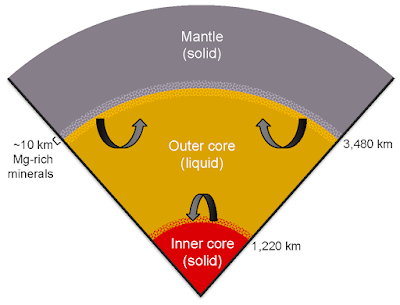Minerals reveal record of magnetic fields
 |
| Representative Image |
Fresh discoveries about common minerals are helping scientists better understand the nature of Earth?s magnetic fields.
Hi-tech imaging technology is enabling researchers to study tiny magnetic spirals in grains of the naturally occurring mineral magnetite, found in rocks in the Earth?s crust.
They have found that these structural vortices ? formed during the cooling of molten rock ? are unaltered by temperature change, as so act as a record of the Earth?s magnetic field.
The discovery could help scientists document how the planet?s magnetic properties have changed over billions of years, and aid understanding of the Earth?s core and plate tectonics.
High-resolution images
A team of researchers led by University of Edinburgh and Imperial College London studied samples of magnetite.
They used a technology known as electron-holography which enables vortices ? which measure about one-tenth of the thickness of spider silk ? to be imaged while they are heated.
Their high-resolution scans have shown that although the magnetic vortices alter in strength when heated, they go back to their original state as they cool, resisting temperature changes.
Field variations
The Earth?s magnetic field protects the planet from charged particles from the sun and enables migratory animals to navigate.
It constantly changes intensity and direction, and can even reverse the magnetic north and south poles.
The study by the Universities of Edinburgh and Nottingham, Imperial College London and Forschungszentrum J?lich, was published in Science Advances.
It was funded by the UK?s Natural Environmental Research Council and European Research Council.